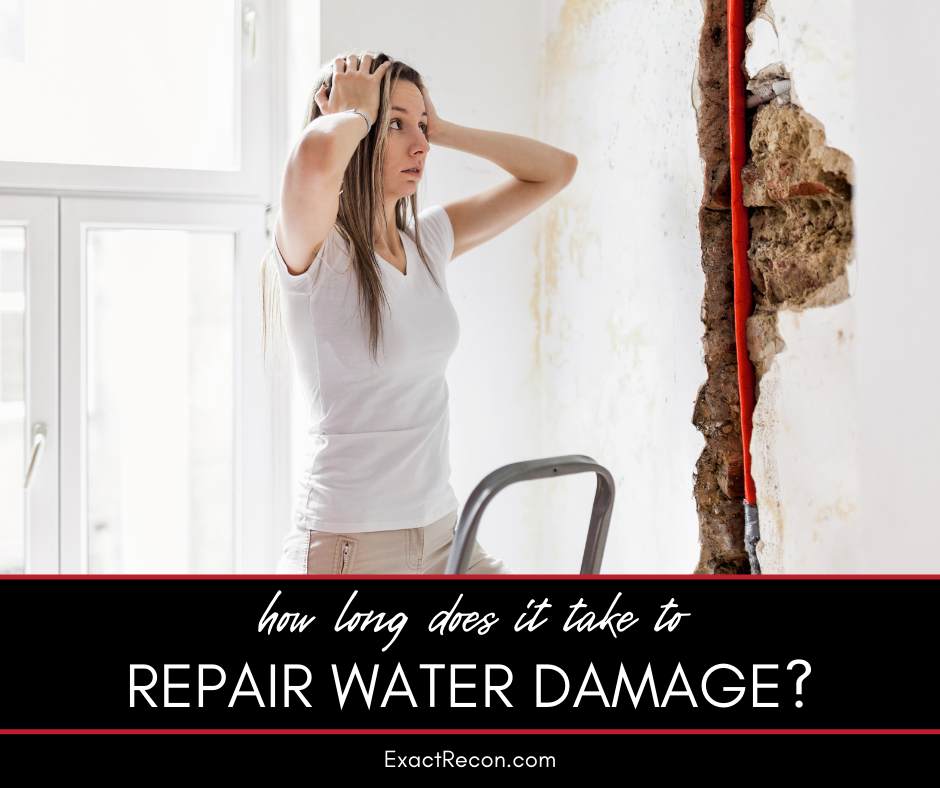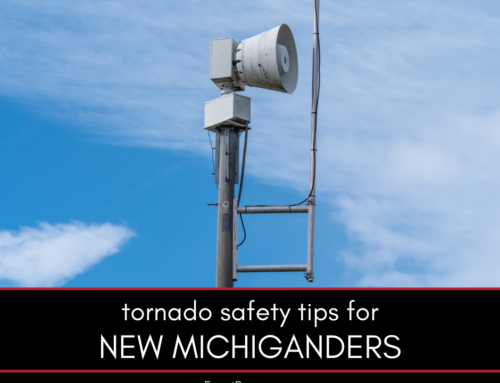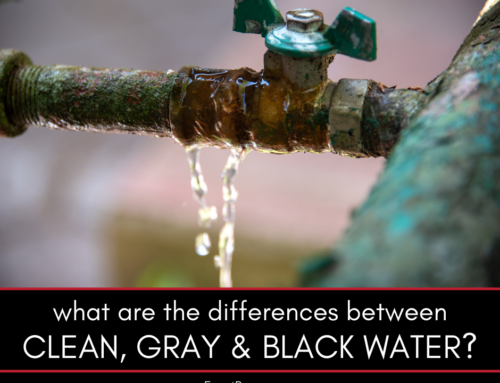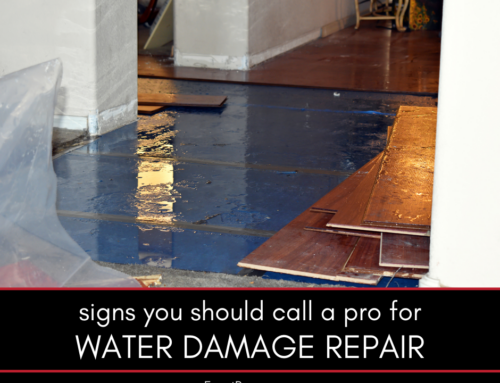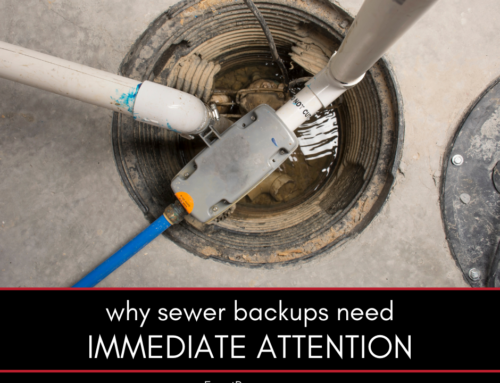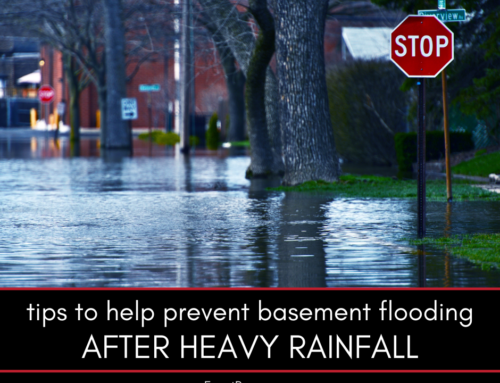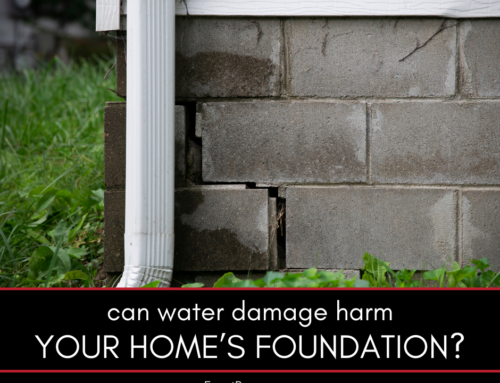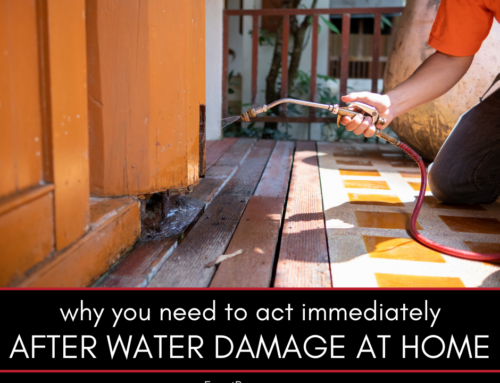Water damage can be a distressing experience for any homeowner. From the initial shock of the incident to the uncertainty of repair timelines, it can be a lot to handle. One of the most common questions we hear is, “How long will the repair take?” If you’re grappling with this concern or just want to be prepared, this guide is for you. Drawing from our extensive experience, we’ll provide insights on the typical duration of water damage repair and the factors that influence it.
How Long Does Water Damage Repair Take?
The duration of water damage repair can vary based on several factors. Here’s a comprehensive breakdown to give you a clearer picture.
This guide covers:
- Assessing the extent of damage
- The drying process
- Restoration and repairs
- Factors affecting repair time
- Importance of timely intervention
- Working with professionals
Here’s a closer look at each.
Assessing the Extent of Damage
The initial assessment is a pivotal step in the water damage repair process. It involves a comprehensive examination of the affected areas to determine the magnitude of the damage. Professionals will inspect walls, floors, furniture, and other items to gauge the water’s penetration and the potential for mold growth or structural damage. This assessment not only helps in estimating the time and resources required for restoration but also in prioritizing tasks. For instance, areas with extensive damage may need immediate attention, while others can be addressed later. Detailed documentation, including photographs and notes, is often part of this step, which can be crucial for insurance claims.
The Drying Process
Once the assessment is complete, the drying process commences. This step is vital to prevent further deterioration and mold growth. Industrial-grade dehumidifiers and air movers are typically employed to extract moisture from the environment and affected materials. The duration of the drying process varies based on the severity of the water intrusion and the materials involved. For instance, porous materials like carpets and drywall might take longer to dry compared to non-porous surfaces like tiles. Continuous monitoring is essential during this phase to ensure that moisture levels are decreasing and the drying process is on track.
Restoration and Repairs
After ensuring that all affected areas are thoroughly dried, the restoration phase begins. This involves bringing the damaged areas back to their original state. Depending on the damage’s extent, this could mean replacing sections of drywall, reinstalling carpets, or refinishing hardwood floors. In more severe cases, structural repairs might be necessary, such as reinforcing damaged beams or pillars. The goal is to restore the property to its pre-damage condition, ensuring safety and aesthetics.
Factors Affecting Repair Time
The time required to complete water damage repairs can vary widely based on several factors. The extent of the damage is a primary determinant; minor issues can be resolved in a few days, while major damages might take weeks. The type of materials affected also plays a role. Some materials dry faster and are easier to repair than others. Additionally, local humidity levels can influence drying times. Lastly, the time elapsed between the water damage incident and the start of the repair process can also impact the duration, as prolonged exposure can exacerbate damage.
Importance of Timely Intervention
Acting swiftly in the face of water damage is crucial. The longer water remains in contact with materials, the greater the potential for irreversible damage and mold growth. Early intervention can not only reduce the scope of repairs but also prevent additional costs. For instance, addressing a minor leak promptly can prevent it from evolving into a major structural issue.
Working with Professionals
Handling water damage can be overwhelming for homeowners. Professional restoration companies bring expertise, experience, and specialized equipment to the table. They can efficiently navigate the complexities of the repair process, ensuring that every detail is addressed. Moreover, professionals can provide guidance on preventing future incidents and can work with insurance companies, making the claim process smoother. Their comprehensive approach ensures that homes are not only repaired but are also safe and healthy environments for residents.
FAQ About Water Damage Repair Duration
Here are some frequently asked questions about the duration of water damage repair. If you don’t see the answers you’re looking for here, please call our office. We’re here to help.
Can I Stay in My Home During the Repair?
Depending on the damage’s extent and the affected areas, it might be safer and more convenient to relocate temporarily.
Does Insurance Cover Temporary Relocation?
Coverage varies by policy. It’s essential to consult with your insurance provider to understand what’s covered.
How Can I Speed Up the Drying Process?
While professional equipment is the most effective, ensuring good ventilation and using fans can aid the drying process.
What If I Discover More Damage Later On?
Always reach out to professionals if you suspect additional damage post-repair. It’s crucial for safety and the longevity of your home.
Is Mold a Concern After Water Damage?
Yes, mold can develop if water damage isn’t addressed promptly and thoroughly. Regular inspections and professional assessments can help prevent mold growth.
Water damage repair can be a complex process, but understanding the timeline and factors involved can ease some of the stress. Remember, in situations like these, professionals like us are just a call away, ready to restore your home to its prime.
Do You Need a Disaster Remediation Expert in Washtenaw County or Jackson County?
If your home has already been damaged, we can help. Check out our services and call Exact Recon for your free disaster remediation quote today. We offer:


